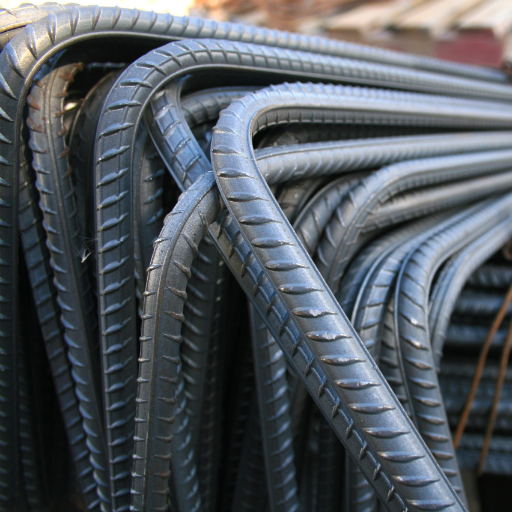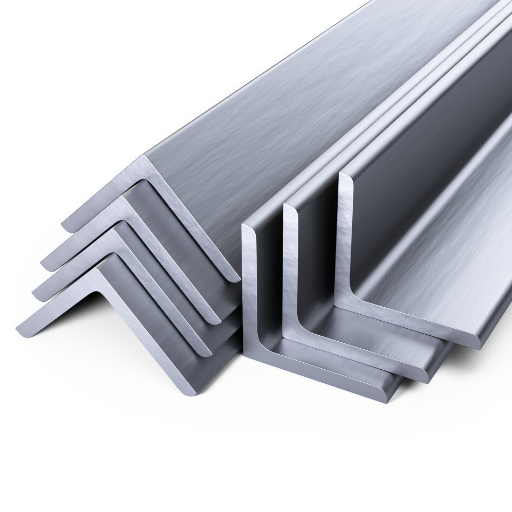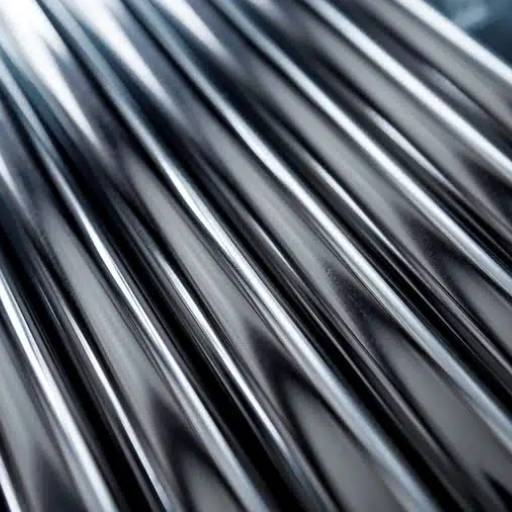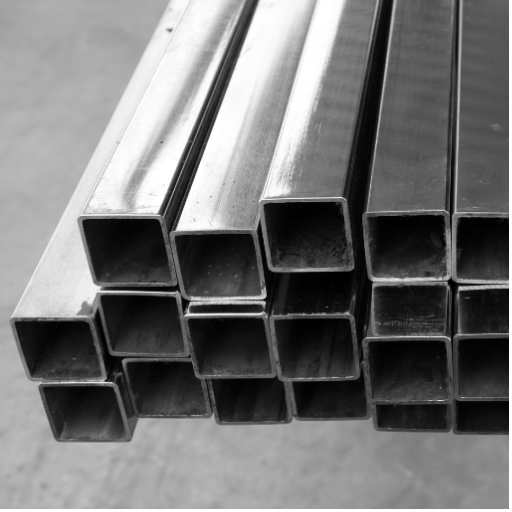While choosing materials for jewelry or watches, or any other everyday item, it is important to know their suitability for Sensitive Skin. If in contact with such objects, a person’s skin may range from slight irritation to severe allergic reaction due to skin sensitivity. Stainless steel is among the most sought-after materials because it withstands wear and tear, does not rust, and looks good. However, if it can irritate sensitive skin, it may be influenced by other factors, namely its grade, alloyed or not, and the skin in question. This article focuses on the properties of stainless steel, reviews its impacts on hypersensitive skin, and describes some important factors to consider when purchasing a metal type of stainless steel that would reduce irritation.
What makes stainless steel suitable for sensitive skin?

Indications of compatibility with sensitive skin are evident due to stainless steel’s ideal hypoallergenic characteristics, especially low or no nickel content which may be employed in its production. Surgical grade or implant grade stainless steels are specifically designed having low allergy potential and contact irritants. Moreover, the inferior contact with the skin due to its smooth surface and the non-oxidative properties adds to the ease of use amongst the more sensitive population.
Breaking down the composition of stainless steel
Stainless steel primarily comprises iron, chromium, nickel, carbon, and other alloying elements. The chromium content, typically at least 10.5%, forms a passive oxide layer on the surface, providing exceptional corrosion resistance and reducing skin irritation. Grades such as 316L or implant-grade stainless steel are preferred for sensitive skin due to their low carbon content (L≤0.03%) and high corrosion resistance. Surgical stainless steel, specifically 316LVM (Vacuum Melted), has an even purer composition, ensuring minimal nickel release and enhanced biocompatibility. Nickel content in these grades is tightly controlled to limit exposure, generally ranging from 10-14% in 316L but below the threshold that typically triggers allergic reactions. These technical parameters ensure the material’s hypoallergenic potential while maintaining its structural integrity.
The role of nickel and chromium in skin compatibility
In the case of stainless steels, the skin compatibility is greatly influenced by the addition of nickel and chromium in the alloy. In addition to the base amount of 10.5% chromium content, it acts as an irritant suppressant by forming a passive oxide layer on the outside surface, improving skin tolerance. Nickel is essential for increasing strength and ductility but should be kept within certain limits to prevent negative effects. Alloys like 316L have nickel contents in the range of 10-14%, which most people do not have a sensitization to. Also, the low carbon content (≤0.03% in 316L) reduces the precipitation of carbides and thus preserves the passive layer of chromium cobalt, ensuring non corrosive and biocompatible surfaces. These parameters, in aggregate, perfectly explain the stainless steel having better compatibility with the skin where a greater degree of compatibility is required.
Why it is important to ensure corrosion resistance for sensitive skin
Corrosion resistance is important for sensitive skin in order to avoid contact dermatitis or allergic contact dermatitis due to nickel or chromium ions released from metals. This resistance is primarily supplied by developing a passive oxide layer on stainless steel which is determined by the chromium content of at least 10.5 percent. Molybdenum additions such as 316L Molybdenum grades (2-3%) improve pitting and crevice corrosion resistance, especially in chloride-containing environments, thus preventing the release of irritants. In addition, the low carbon content (≤0.03% in 316L) limits the possibility of sensitization out of Carbide precipitation and optimal conditions for passive film maintenance are provided. In sum, the properties allow high corrosion-resistance alloys for deep penetration into the skin for a long time, even in sensitive individuals.
Are all stainless steel grades safe for sensitive individuals?

The same can be said for sensitive individuals using stainless steel. While austenitic grades such as 304 and 316L contain minimal porosity, reducing irritation, austenitic grades such as 304 and 316L have a high corrosion resistance. The lower-end grades may have a higher percentage of nickel or other metals, which dissolve in certain scenarios and may cause an allergic reaction in some people. For example, ferritic and martensitic stainless steels are less resistant to corrosion, which, in turn, makes them less ideal for extended periods of use when in contact with skin. It is crucial to make sure that hypoallergenic steel, which is biocompatible, is selected, especially in scenarios where the application is sensitive.
Types and comparison of the most common grades of stainless steel
304 and 316 stainless steel are members of the austenitic family and stand out due to their significant mechanical properties, corrosion resistance, lack of magnetism, and high percentage of chromium 18-20% and nickel 14%. 304 type is widely used in everyday practices, on the other hand, 316 grade has a higher percentage of molybdenum 2-3% making it highly resistant to chlorides and other severe conditions hence finds application in marine and medical use. These 2 grades do retain good ductility and formability.
Ferritic stainless steels, such as grade 430, are less expensive than austenitic types owing to their lower nickel content, which is less than 0.5 %. However, they have low corrosion resistance because of their low chromium content, approximately 16–18 %. They are magnetic and cost-effective, and they are mostly used in automotive trim and industrial equipment.
On the other hand, grade 410 martensitic stainless steel has enough carbon content to impart high hardness and strength but is disadvantageous in terms of corrosion resistance, with chromium content between 11.5% and 13.5 %. These properties make them best suited for cutlery, surgical instruments, and other items that need wear resistance but do not require a corrosive environment.
By understanding the abovementioned differences, we can ensure that the correct stainless steel is used for the right purposes, such as corrosion resistance and tensile strength.
Why 316L is often recommended for sensitive skin
If you have sensitive skin, Grade 316L stainless steel can be an ideal option because of its mechanical and chemical properties, reducing the susceptibility to allergies or any form of skin irritation. This content has a low percentage of carbon (less than 0.03%) and relatively high concentrations of chromium and molybdenum, which range from 16 to 18% and 2 to 3%, respectively. Such elements increase the corrosion resistance capacity of the metal, especially towards chlorides and other extremes of the environment, therefore making 316L ideal for long-term skin wear. Also, it has about 10%-14% nickel content. Still, due to thick and durable passive oxide layer formation, the release of nickel ions, which is one of the causes of allergens in sensitive people, is greatly controlled. Its anti-allergic characteristics, alongside having high corrosion resistance and stable color qualities, enhance its applicability for medical devices, ornaments, and smart accessories.
The effect of trace metals on skin reactions
In many individuals with hypersensitivity or allergic reactions, trace metals such as nickel, cobalt, and chromium are common in aggravating these conditions. Prolonged contact of nickel with the skin usually results in sensitization and the development of allergic contact dermatitis (ACD) as it leaches out nickel ions into the body. The concentration of nickel ions that are leached out of the skin varies according to environmental conditions such as pH and presence of sweat, which in turn determines the possibility of a skin irritation rash. Nickel ions may be present in cobalt and chromium, which are sometimes used as impurities or as a bind in metal alloy composition, these substances can elicit almost the same reactions as nickel among already sensitized individuals. An example of this is, whether Cr6+ and Cr3+ ions are both present in jewelry, they will both elicit an allergic reaction, however Cr6+ ions would cause greater irritations than Cr3 ions in specific scenarios due to their higher penetrability and higher allergies caused. The REACH in Europe’s guidelines have imposed certain restrictions regarding the amount of individual ions released in organisms to help alleviate these risks, for instance the maximum release of nickel ions from objects that often have prolonged skin contact is less than 0.5 μg/cm²/week.
Can stainless steel jewelry work for allergy-prone individuals?

Using metals like high-grade stainless steel (316L or 304) produces stainless steel jewelry, which is generally suitable for allergy-prone people. The reason for this is that the high-premium alloys used to make this jewelry have small amounts of nickel as well as other allergens and irritants. That being said, individuals with a more severe metal allergy should be careful, as stainless steel has trace amounts of certain elements that might cause a reaction. To be safer, surgical-grade or hypoallergenic stainless steel is ideal.
Frequent Causes of Metal Allergies
- Nickel: Nickel is really popular in jewelry, coins, and fasteners, but it’s also known to be an allergen that can cause allergic reactions. It can also leach into the skin when it comes in contact with metal surfaces and sweats, leading to dermatitis, among other infections.
- Cobalt: Cobalt is used with nickel and many other metals and can lead to an allergic reaction. It can be found on cosmetics, some implants, and industrial products. Cobalt is mostly damaging to people who have a history of nickel being an allergen to their body.
- Chromium: Although present in various chromium compounds, such as stainless steel and chrome-plated items, chromium has a tendency to irritate skin through oxidation, forming a hexavalent compound. Workers are more susceptible, as sensitivity augments with exposure duration.
- Copper: Copper allergy is rare, but it can provoke an allergic response in certain groups, particularly those already allergic to nickel. Copper is contained in brass and even bronze alloys and can also leave a green stain on the skin after prolonged usage or irritation.
- Lead: Due to its toxicity, lead is highly regulated but still found in some types of inexpensive jewelry and older metals. Its use should be avoided since absorptive lead can cause dermatitis or other related inflammatory medical conditions.
- Zinc: Found in a wide variety of alloys and almost in all kinds of metal coatings, zinc however has very few instances of reaction, but a few cases do occur with individuals highly reactive to other metals when in contact with zinc.
It can also aid in making choices regarding everyday objects as well as employment situations where the risk of exposure is minimized for people with allergies.
The comparison of stainless steel with hypoallergenic substances
People believe that due to the metal’s nature, stainless steel makes the most sense when considering hypoallergenic applications. This particular metal combines iron, at least 10.5% chromium, and nickel, along with a few other elements in trace amounts. Also, chromium is imperative in providing a passivation layer that protects from corroding and subsequent allergic reactions to the skin. There are some materials, like surgical-grade stainless steels (316L), which contain low nickel and irritants and are perfect for sensitive areas.
Unlike Titanium, which is highly hypoallergenic, stainless steel is nonreactive but not completely and contains traces of nickel and other metals. However, the composition of the alloy is such that it does not react and allergies do not occur on a large scale. Due to its low cost and ease of machinability, stainless steel is a common material choice for various items, from jewelry to surgical tools, as it shows great resistance. An example is 316L stainless steel, which shows allergic potential but very low due to its metal structure’s equilibrium and contains previously mentioned nickel composition around 10-14%.
While plastic and silicone are inherently hypoallergenic materials but relatively weak in structure. This statement comes close to being true for stainless steel as well. It possesses good mechanical characteristics such as high strength and good resistance to deformation. Since it also has good density (around 8g/cm3) and thermal conductivity, it can be used in those applications where the material has to withstand different changing physical conditions.
Stainless steel should be considered a good option for hypoallergenic jewellery, especially for people who are nickel-allergic. It is always a good idea to opt for low-nickel variants. They provide an excellent mix of usage properties and hypoallergic characteristics without a significant sacrifice.
Practical suggestions to consider while choosing stainless steel jewelry for allergies
While looking for allergy-free stainless steel jewelry, I make it a point to check if jewelry made out of 316L or 304 stainless steel is available. These grades have a low nickel release rate and are well-suited for garments, especially those with a high probability of corroding. I make it a point to look out for the product description, packaging and the jewelry itself for “surgical grade” markings as these are safe for sensitive skin. Moreover, I try to avoid buying stainless steel, which has been plated, because plating tends to come off at some point in time, exposing the base material, which can have skin irritating properties.
Is stainless steel safe for body contact and piercings?

Stainless steel is considered to be an ideal choice for body piercings and contact because of its resistance to corrosion, durability, and low levels of nickel release in some grades. Low-end grades such as `316L and 304’, also commonly known as surgical grade stainless steel, are popular choices as body jewelry due to lower rates of skin allergies and irritations. These materials are also non-porous, so there is less chance of bacteria growth on the surface, which makes them clean and good for long use. But for people who might be allergic to nickel in severe conditions may still want to go for more hypoallergenic solutions and may also want to have advice from a professional piercer.
Advantages of Using stainless steel on a body piercing and for daily use
Due to a great mix of strength, safety, and relative ease of care, I prefer to use stainless steel, especially for body piercings and daily. It is also highly resistant to corrosion, meaning there is a lower chance of rusting or degradation, and is more suitable under high moisture and everyday use. 316L and other surgical-grade stainless steel is ideal for piercings as the amount of nickel in these is small, reducing allergic reactions and skin irritations. The non-porous surface also limits bacterial growth, making it ideal for long-term use as it is also clean and safe.
How stainless steel helps with sensitivity in some parts of the body
Stainless steel assists people with sensitive parts of their body by using its biocompatible features, for instance, Steel 316L. Low nickel release means that the chances of allergies striking are kept to a minimum, plus the smooth non-porous surface also helps as it stops the adherence of microorganisms which reduces the risk of an infection. What is more, the material does not corrode, which means that even in extreme situations, the material will not decay or release dangerous materials, making it quite practical as well as safe in places where sensitivity is a factor.
Tips to follow when wearing stainless steel on sensitive skin
When wearing stainless steel on sensitive skin, try the surgical grade one, for example, 316L or 316LVM, so that the chances of the skin reacting badly are reduced. Avoid washing for long periods of exposure as this affects the finish and weak spots, which leads to discomfort in the skin whenever put on. The sensitive parts can heal but to do so, make sure to stop usage whenever there is redness or swelling present until someone who can check the condition and provide treatment advice, usually a dermatologist.
How does stainless steel compare to other hypoallergenic metals?

Sensitivity to metals can be a common problem for many people, which is why wearing some jewelry can be quite uncomfortable. Skin-sensitive individuals generally prefer perigold metal as it is anti-corrosive, easy to wear, and less costly. Although titanium has better anti-allergic properties, it’s overall more expensive. Stainless steel is still a good option with less cost than titanium but weighs slightly more than it. Platinum, on the other hand, is friendly to people with allergies and is considered high stature, but once again, it is much more expensive than stainless steel.
In contrast, stainless steel has much better corrosion resistance. Silver is useful to a large number of people who are sensitive to metals, but silver scratches easily and corrodes as well. Overall, stainless steel is able to withstand such irritations and provides a great balance between cost, durability, and skin irritations.
Titanium vs Steel for Sensitive Skin Users: A Detailed Comparison
Technically, both titanium and stainless steel are acceptable for users with basic allergies, but their properties and uses differ a lot. In particular, titanium is a notable metal used in various implants, such as joints or teeth replacements, because it causes no allergy. One of the main multiple advantages of titanium over steel is its weight, titanium density is close to 4.5 g/cm³, and steel is around 7.8 g/cm³. This makes titanium much easier to wear for vast periods. To add onto that, it is able to resist corrosion in salty water which is an essential trait for almost any jewellery.
Surgical materials such as titanium and stainless steel 316L are actually bio-compatible, although with slight variations; steel is relatively heavier but dwarfs titanium in virtually all facets; for instance, stainless 316L can withstand more abuse than pure titanium. This makes it a suitable metal for things like jewelry and watches, which get considerable temperatures, unlike titanium, where cost is a concern. However, the drawback with this material is that it’s considerably heavier. For high-performance applications, however, titanium, which is both light and strong, is more ideal and common within the market. The two metals are comparably compatible, meaning that choosing between them depending on the comfort, cost, and purpose comes down purely to individual preferences.
The use of surgical-grade stainless steel in hypoallergenic environments
316L surgical steel falls into the category of alloplastic implants that are largely considered hypoallergenic and, therefore, preferred by clients who have metal allergies. Because the alloy steel does not release nickel ions, which are the primary causes of metal allergy, there is minimal chance of allergic responses to its use. Additionally, the strength and anti-corrosion characteristics of the alloy makes it suitable for long term use on human skin in medical devices, jewelry, or implants. Besides that, the alloy is specifically easier to use where anti-allergic properties are required as porous structures are eliminated, preventing bacteria growth and making it safe for use where biocompatibility is a concern.
Exploring alternatives for individuals with severe metal sensitivities
In the case of severe intolerance to metals, I would suggest looking at titanium and niobium instead. These metals are completely hypoallergenic, light, and anti-corrosive, making them perfect for even the most sensitive of skins. Furthermore, materials like PTFE or silicone are a reasonable substitute for medical devices because they are polymeric and do not contain any metal. Another option is to use materials without nickel, or non-metal coated ones to prevent reactions in skin using the material.
Can stainless steel still cause reactions in certain cases?

Yes, especially in people who are sensitive to nickel or other alloying metals included in some stainless steel grades, stainless steel can cause reactions in rare cases. Certain stainless steels, such as 316L, are low in nickel and designed for resisting corrosion; however, certain conditions, such as moisture or long use, lead to nickel leaching. For some people who are very sensitive to certain alloys even such leaching could cause allergic reactions, thus in such cases using other materials would be a better option.
Factors that might lead to skin irritation with stainless steel
- Alloy Composition: The composition of the alloys determines whether stainless steel will be irritating or not, and what specific contents it will have. The leaching of nickel from alloy grades containing higher amounts, such as 304 stainless steel, becomes more probable due to environmental factors like humidity concentration.
- Prolonged Contact: Augmented irritation coupled with stainless steel and sweat or moisture can increase the chance of stainless steel skin contact irritation. Sweating accelerates the leaching of the alloy’s nickel, exposing more of the skin to irritants.
- Environmental Conditions: Environmental factors such as humidity levels, exposure to seawater, and temperature changes can increase the rate of corrosion in some less resistant stainless steel grades. These factors create a situation where small quantities of the irritant, nickel ions, can more easily contact the skin.
- Individual Sensitivities: Personal allergies or sensitivities to nickel or chromium are additional determinants. For highly sensitized people, stainless steel can even trigger dermatitis because even a low percentage of metals ions released from the tightening anti-allergic efficacy can cause an allergic reaction.
- Type of Coating or Finish: Several surgical instruments made of stainless steel are said to be coated with finishes intended to minimize the skin’s contact with irritants. But if the coating wears out due to friction or just normal usage, the naked metal is exposed, and the skin can contact it, which can cause a reaction.
- Poor Quality Alloys: Poorer-grade stainless steel may have experienced less thorough processing to cleanse it from impurities or minimize the amount of nickels. Alloys manufactured in this way increase the chances of irritation and allergic reaction, especially for sensitive persons.
Understanding allergy-related symptoms
- Skin Redness: Affected regions may appear reddish and might be warm to the touch. This is usually the first sign of an allergy response.
- Skin Itchiness: Itching may persist with varying severity, leading to a mild to acute scratching of the targeted area which may worsen the situation.
- Symptoms in the form of Rash: Hives, small bumps, or lesions are common allergic rashes. These rashes might occur where a metal device or part is in contact.
- Dry Skin or Scaly Skin Problem: This occurs due to too much contact and can irritate the skin or cause an allergic response.
- Blisters on the Skin: In extreme reactions, tiny vesicles may form which can get infected if not treated properly.
- Skin Burn or a sting feeling: Skin reactions of this nature are extremely irritating and often leave an affected area feeling like it was burned or stung.
- Swelling: An arm or leg’s swelling may be ignored or considered unimportant as it is only the body’s inflammation mechanism in response to an antigen and often occurs with other symptoms.
Identifying these symptoms early and avoiding direct contact with the triggering material can help reduce the intensity of the reaction and prevent any further consequences.
Recruitment of a professional to help with your metal sensitivities
However, in case the skin gets irritated or has a rash following exposure to certain metals for a considerable time, it is wise to reach out to a doctor. Redness, swelling, and itching at the area where a piece of jewelry, an implant, or any other metal product was applied may suggest sensitivity or allergy to the metal. In particular, it is advisable to see a healthcare provider when such substances have not been helpful or no improvement was achieved but symptoms worsened – in this case, it is possible to assume that some other allergens were the cause. In such situations, a person may need to undergo a thorough examination to determine which metal is causing allergic reactions.
Reference sources
Frequently Asked Questions (FAQs)
Q: Is 316L stainless steel hypoallergenic and suitable for sensitive skin?
A: Yes, 316L stainless steel is considered hypoallergenic and is generally suitable for sensitive skin. This type of stainless steel is an alloy made with a lower nickel content, making it less likely to cause allergic reactions. It’s also corrosion resistant and often used in medical applications, which further supports its suitability for those with sensitive skin.
Q: What type of stainless steel is best for people with nickel allergies?
A: For people with nickel allergies, the best type of stainless steel is typically 316L or 430. These grades have lower nickel content or are nickel-free, respectively. 316L stainless steel is particularly popular for jewelry and medical implants due to its hypoallergenic properties and corrosion resistance.
Q: Are the hypoallergenic properties of stainless steel affected by prolonged wear?
A: The hypoallergenic properties of stainless steel are generally long-lasting. However, prolonged wear, especially in combination with sweat and friction, can potentially cause some degradation of the metal’s surface. To maintain its hypoallergenic properties, it’s recommended to clean stainless steel jewelry regularly and avoid exposing it to harsh chemicals.
Q: Can people with sensitive ears safely wear stainless steel jewelry?
A: Yes, people with sensitive ears can usually safely wear stainless steel jewelry, especially if it’s made from hypoallergenic stainless steel like 316L grade. This type of stainless steel is less likely to cause allergic reactions, making it a good choice for earrings and other jewelry for those with sensitive skin or ears.
Q: Is nickel a common allergen in stainless steel?
A: Nickel is indeed a common allergen, and it’s present in many types of stainless steel. However, hypoallergenic stainless steel, such as 316L grade, contains lower amounts of nickel, making it less likely to cause an allergic reaction. For those with severe nickel allergies, nickel-free stainless steel options are also available.
Q: How does stainless steel compare to other metals in terms of hypoallergenic properties?
A: Stainless steel, particularly hypoallergenic grades like 316L, is considered one of the more skin-friendly metals. It’s less likely to cause allergic reactions compared to metals like nickel or copper. However, other metals like titanium and platinum are often considered even more hypoallergenic. The choice often depends on individual sensitivity and the specific application.
Q: What metals are safe for people with sensitive skin?
A: For people with sensitive skin, several metals are considered safe and hypoallergenic. These include high-grade stainless steel (like 316L), titanium, platinum, and certain types of gold (especially 14k or higher). Stainless steel is often a popular choice due to its durability, affordability, and hypoallergenic properties when compared to some other options.
Q: How can I tell if the stainless steel jewelry I’m buying is hypoallergenic?
A: To determine if stainless steel jewelry is hypoallergenic, look for labels indicating 316L grade stainless steel. This grade is known for its hypoallergenic properties. Additionally, reputable sellers should be able to provide information about the composition of their stainless steel products. If you’re particularly sensitive, it’s always best to consult with the seller or manufacturer directly about the specific alloy used.







